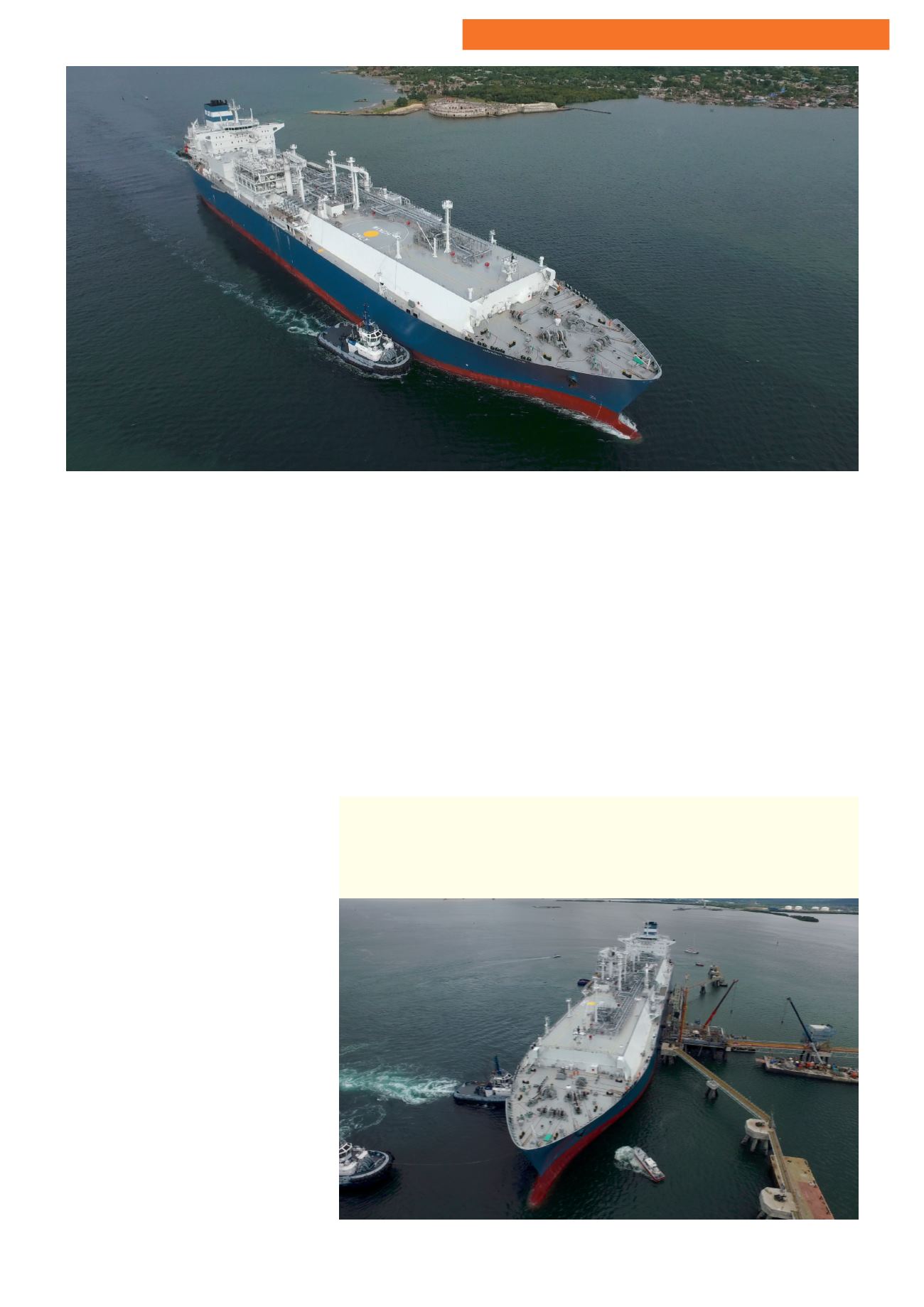
 www.truckandtrack.com
www.truckandtrack.com
June/July 2017
Truck and Track
55
DANGEROUS GOODS
TheFinnishmarineenginemanufacturer
Wärtsilä
Corporation
has
been
contracted to provide equipment and
maintenance for the FSRU (Floating
Storage Regasification Unit) and LNG
carrier vessels of Oslo-based operator
Höegh LNG A/S.
Two new 170,000 m
3
LNG carrier vessels
being built for Höegh LNG at the Samsung
Heavy Industries (SHI) and Hyundai Heavy
Industries (HHI) shipyards in South Korea
will each be powered by fourWärtsilä 50DF
dual-fuel engines. There is an option for a
further three vessels in the SHI series.
The two vessels will also feature the
latest Wärtsilä regasification technology
to operate as FSRUs. The regasification
solution to be supplied to these vessels
represents Wärtsilä’s latest development
in the field.
It is based upon the use of seawater and
glycol as the intermediateheatingmedium,
a lighter and less space-demanding
alternative than earlier systems with a
propane-based heating system. By using
seawater as opposed to steam-heated
solutions, the CO2 emissions are notably
reduced. Furthermore it will be delivered
as a complete module, thereby making
installation easy.
Under
a
new
five-year
technical
management agreement, Wärtsilä will
provide support for eight ships of the
company’s existing fleet, as well as for
its two new vessels currently under
construction. The services of the technical
management agreement includeCondition
Based Maintenance (CBM) to optimise the
availability, reliability and performance of
the Wärtsilä engines.
Included are maintenance planning and
advisory services involving the combined
technical expertise of Wärtsilä and Höegh
LNG specialists. The customer will have
access too to Wärtsilä’s extensive global
service network.
“Our
longstanding
relationship
with
Höegh LNG is again strengthened by this
supply of our state-of-the-art engines
and regasification systems, as well as
the technical management agreement
that will ensure optimal performance of
the company’s entire fleet,” asserts Cato
Esperø, Sales Director of Wärtsilä Norway.
Øivin Iversen, CTO of Höegh LNG, remarks:
“We have confidence in Wärtsilä as a
provider of well designed and engineered
solutions, and are pleased with the choice
of a strong provider as regards the engines
and regasification systems.”
GormHillgaar, Senior Vice-President – Fleet
Management at Höegh LNG, emphasises:
“The technical management agreement
is also very important. Wärtsilä’s CBM
service enables excellent predictability of
the engines’ condition and maintenance
requirements, which is of great value to our
operations.”
Wärtsilä has delivered and commissioned
numerous floating LNG regasification
plants based on either closed or open loop
regasification technology. Wärtsilä has
also provided modularised regasification
plants for jetty installations. These
facilitate a much shorter construction time
compared to conventional land-based LNG
regasification terminal projects.
www.wartsila.com/gbr www.hoeghlng.comLatest Wärtsilä LNG
regasification technology
aids Höegh carriers
The new LNG tanker Höegh Grace has a deadweight of 82,258 tonnes (gross tonnage 109,844)
The Alfa Laval company Framo AS of Bergen, Norway
(www.framo.com) has signed a contract with Höegh LNG for the
delivery of pumping systems to their new FSRU described above. The contract is for one unit, with an option for three
more units which are currently being built, as noted, at Samsung Heavy Industries in South Korea. By using an onboard
regasification unit, the liquid gas carried by the LNG tanker is converted to gas prior to being brought ashore. This
process requires the gas to be heated, and for this heating large quantities of seawater have to be pumped in. Framo
is to install four pumps in each of the vessels which are due to be delivered during the period 2019 to 2021. A similar
solution has been successfully delivered to Shell’s Prelude FLNG (Floating Liquefied Natural Gas) facility.
The Höegh Grace



















